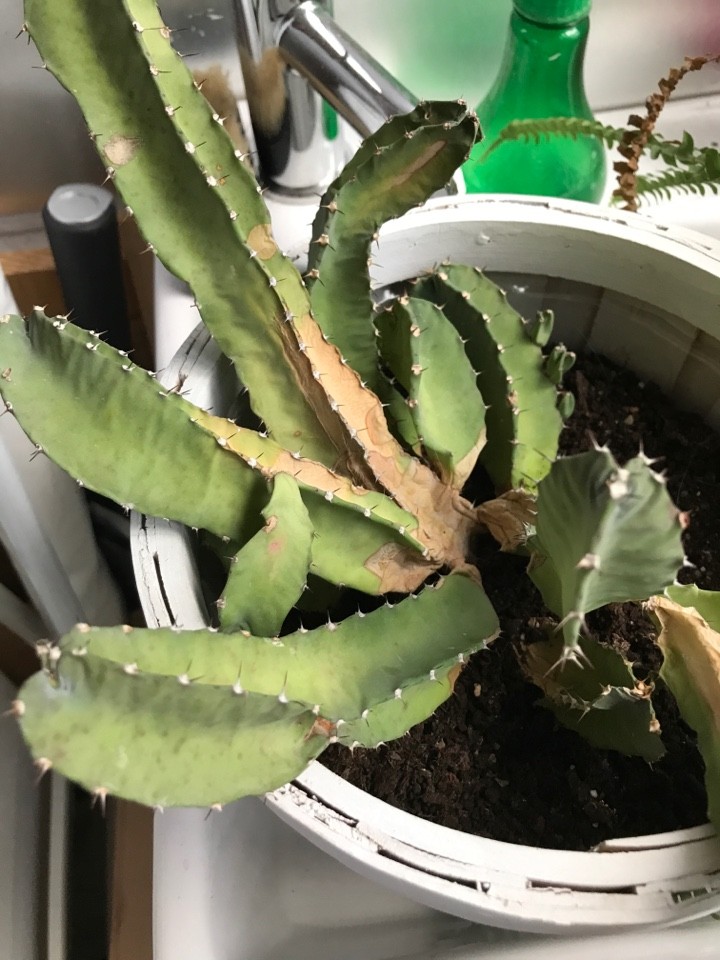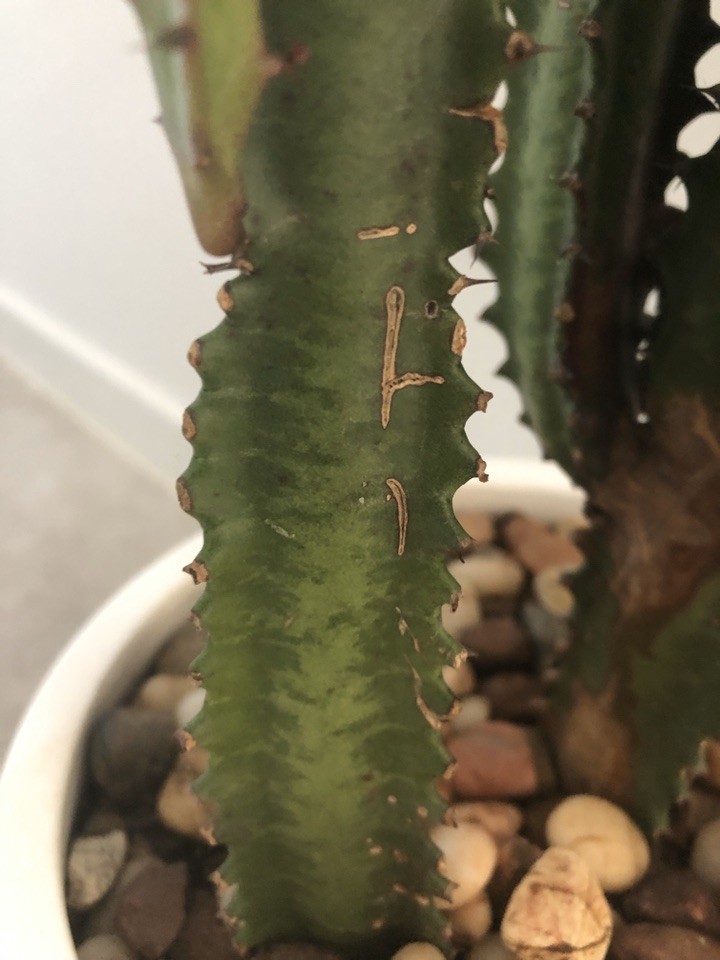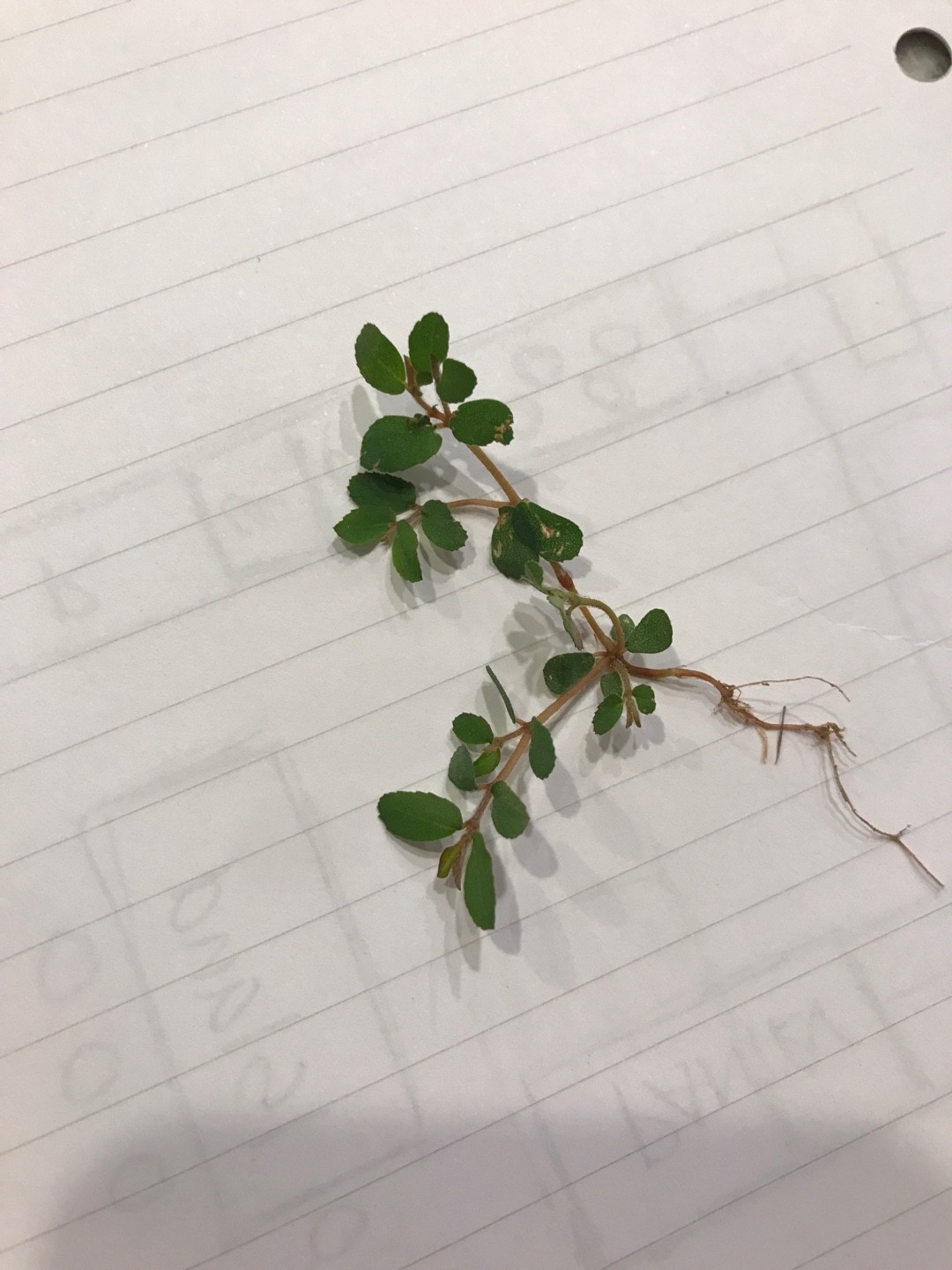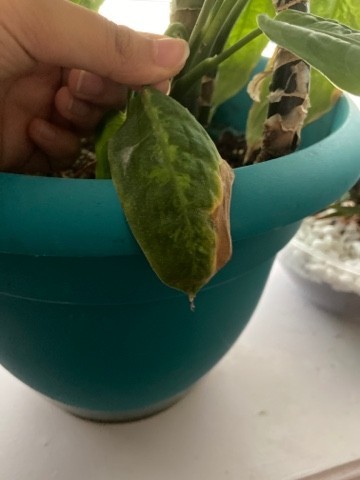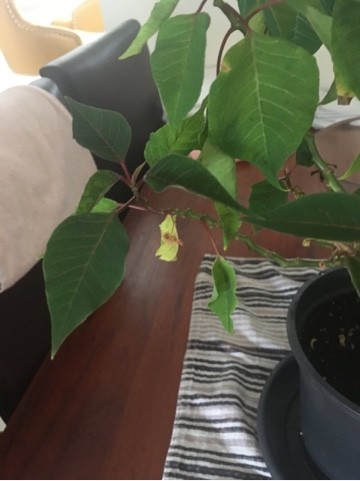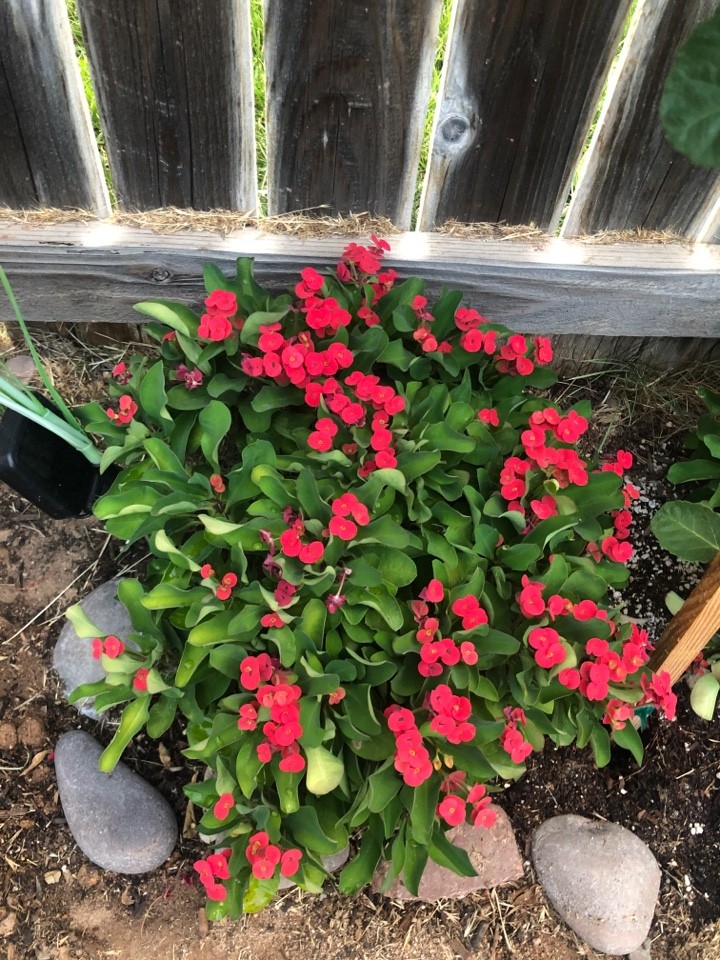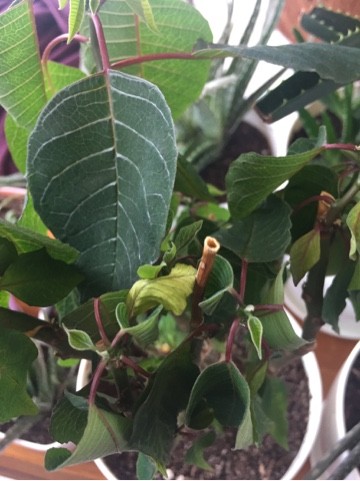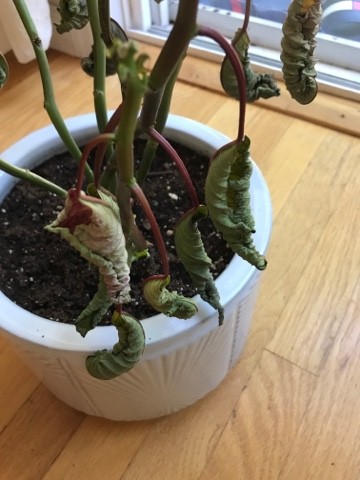What is the best way to water my Jerusalem spurge?
Your Jerusalem spurge will not be too picky about how you choose to water it. As such, you can use just about any common watering tool to moisten this plant’s soil. Watering cans, hoses, and even cups will work just fine when it is time to water your Jerusalem spurge. Regardless of which watering tool you use, you should typically apply the water directly to the soil. In doing so, you should ensure that you moisten all soil areas equally to give all parts of the root system the water it needs. It can help to use filtered water, as tap water can contain particles that are harmful to plants. It is also beneficial to use water that is at or slightly above room temperature, as colder or hotter water can be somewhat shocking to the Jerusalem spurge. However, the Jerusalem spurge usually responds well to any kind of water you give it.
![more]()
What should I do if I water my Jerusalem spurge too much or too little?
For outdoor plants, especially newly planted plants or plant seedlings, they can be prone to lack of watering. Remember that you need to keep watering enough for a few months when the tree is small or just planted. This is because once the roots are established, Jerusalem spurge can rely on rain most of the time. When your Jerusalem spurge is planted in pots, overwatering is often more likely to.When you accidentally overwater your Jerusalem spurge, you should be prepared to remedy the situation immediately. First, you should stop watering your plant right away to minimize the effect of your overwatering. After, you should consider removing your Jerusalem spurge from its pot to inspect its roots. If you find that none of the roots have developed root rot, it may be permissible to return your plant to its container. If you do discover signs of root rot, then you should trim away any roots that have been affected. You may also want to apply a fungicide to prevent further damage. Lastly, you should repot your Jerusalem spurge in soil that is well-draining. In the case of an underwatered Jerusalem spurge, simply water this plant more frequently. Underwatering is often an easy fix. If you underwater, the plant's leaves will tend to droop and dry out and fall off, and the leaves will quickly return to fullness after sufficient watering. Please correct your watering frequency as soon as underwatering occurs.
![more]()
How often should I water my Jerusalem spurge?
Most plants that grow naturally outdoors can be allowed to grow normally with rainfall. If your area lacks rainfall, consider giving your plants adequate watering every 2 weeks during the spring and fall. More frequent watering is needed in summer. In winter, when growth becomes slower and plants need less water, water more sparingly. Throughout the winter, you may not give it additional watering at all. If your Jerusalem spurge is young or newly planted, then you should water more frequently to help it establish, and mature and grow up to have more adaptable and drought tolerant plants. For potted plants, there are two main ways that you can determine how often to water your Jerusalem spurge. The first way is to set a predetermined watering schedule. If you choose this route, you should plan to water this plant about once every week or once every other week. However, this approach may not always work as it does not consider the unique conditions of the growing environment for your Jerusalem spurge . Your watering frequency can also change depending on the season. For instance, a predetermined watering schedule will likely not suffice during summer when this plant's water needs are highest. An alternative route is to set your watering frequency based on soil moisture. Typically, it is best to wait until the first two to four inches of soil, usually ⅓ to ½ depth of the pots, have dried out entirely before you give more water.
![more]()
How much water does my Jerusalem spurge need?
When it comes time to water your Jerusalem spurge, you may be surprised to find that this plant does not always need a high volume of water. Instead, if only a few inches of soil have dried since your last watering, you can support healthy growth in the Jerusalem spurge by giving it about five to ten ounces of water every time you water. You can also decide your water volume based on soil moisture. As mentioned above, you should note how many inches of soil have dried out between waterings. A surefire way to make sure your Jerusalem spurge gets the moisture it needs is to supply enough water to moisten all the soil layers that became dry since the last time you watered. If more than half of the soil has become dry, you should consider giving more water than usual. In those cases, continue adding water until you see excess water draining from your pot’s drainage holes. If your Jerusalem spurge is planted in an area that gets plenty of rain outdoors, it may not need additional watering. When the Jerusalem spurge is young or just getting established, make sure it gets 1-2 inches of rain per week. As it continues to grow and establish, it can survive entirely on rainwater and only when the weather is hot and there is no rainfall at all for 2-3 weeks, then consider giving your Jerusalem spurge a full watering to prevent them from suffering stress.
![more]()
How can I tell if i'm watering my Jerusalem spurge enough?
Overwatering is a far more common problem for the Jerusalem spurge, and there are several signs you should look for when this occurs. Generally, an overwatered Jerusalem spurge will have yellowing leaves and may even drop some leaves. Also, overwatering can cause the overall structure of your plant to shrivel and may also promote root rot. On the other hand, an underwatered Jerusalem spurge will also begin to wilt. It may also display leaves that are brown or brittle to the touch. Whether you see signs of overwatering or underwatering, you should be prepared to intervene and restore the health of your Jerusalem spurge.
![more]()
How can I water my Jerusalem spurge at different growth stages?
When the Jerusalem spurge is very young, such as when it is in a seedling stage, you will need to give it more water than you would if it were at a mature age. During the early stages of this plant’s life, it is important to keep the soil consistently moist to encourage root development. The same is true for any Jerusalem spurge that you have transplanted to a new growing location. Also, the Jerusalem spurge can develop showy flowers and fruits when you give them the correct care. If your Jerusalem spurge is in a flowering or fruiting phase, you will likely need to give a bit more water than you usually would to support these plant structures.
![more]()
How can I water my Jerusalem spurge through the seasons?
The seasonal changes will affect how often you water your Jerusalem spurge. Mainly, during the hottest summer months, you will likely need to increase how much you water this plant, especially if it grows in an area that receives ample sunlight. Strong summer sunlight can cause soil to dry out much faster than usual, meaning that you’ll need to water more frequently. By contrast, your Jerusalem spurge will need much less water during the winter, as it will not be in an active growing phase. During winter, you can get by with watering once every 2 to 3 weeks or sometimes not at all. For those growing this plant indoors, you should be somewhat wary of appliances such as air conditioners, which can cause your plant to dry out more quickly, which also calls for more frequent watering.
![more]()
What's the difference between watering my Jerusalem spurge indoors vs outdoors?
In some cases, your Jerusalem spurge may not need any supplemental watering when it grows outside and will survive on rainwater alone. However, if you live in an area of little to no rain, you should water this plant about every two weeks. If you belong to the group of people who live out of this plant's natural hardiness zone, you should grow it indoors. In an indoor setting, you should monitor your plant's soil as it can dry out more quickly when it is in a container or when it is exposed to HVAC units such as air conditioners. Those drying factors will lead you to water this plant a bit more often than if you grew it outdoors.
![more]()
Do I need to prune my Jerusalem spurge?
The Jerusalem spurge is a low-maintenance, winter-hardy, and drought-resistant evergreen perennial plant. This means it can thrive almost anywhere. This unique plant grows well indoors, as well as in many outdoor environments. To keep yours in good health, it’s recommended that you prune it only as needed to control growth and maintain shape. This popular shurb can take up quite a bit of room if left to grow freely. Given enough time, it can be pruned to grow into a small tree. Jerusalem spurge is very resilient and learning how to prune them is easy.
![more]()
When is the best time to prune my Jerusalem spurge?
A lot of new gardeners shy away from pruning the Jerusalem spurge because they’re afraid to cut too much. Luckily, Jerusalem spurge is generally considered to be among the easier and more forgiving plants to prune since regrowth appears quite quickly. Although these perennials are relatively fast-growing, you only need to prune when you spot unsightly overgrowth or damaged leaves. In other words, if your Jerusalem spurge starts to look uneven or damaged, it may be a good time to prune. If you want to control the size of Jerusalem spurge, you need to do a strong pruning in winter time, and you can prune to the shape you want. If the shape is appropriate and only small-scale shaping is needed (pruning no more than 1/4 of the total size of the plant), it can be done in summer or autumn. When Jerusalem spurge is growing, if there are yellowing leaves and diseased leaves, prune off the yellowing leaves at the bottom and the parts of the leaves that have spots due to disease infection, which can effectively reduce the infection. If the number of leaves with spots is relatively large, the number of pruned leaves should not exceed a quarter of the total to avoid affecting the growth of Jerusalem spurge.
![more]()
What should I do after pruning my Jerusalem spurge?
When pruning your Jerusalem spurge, always use freshly cleaned shears to prevent the possibility of cross-contamination from other plants. The Jerusalem spurge has a high tolerance for drought and cold weather, and can even survive irregular watering schedules for short periods. When grown indoors, it prefers temperatures between 65 and 75 °F and should be kept away from air conditioning drafts to prevent discoloration, leaf fall, and other damage.
![more]()
How should I prune my Jerusalem spurge during different seasons or stages of growth?
The good news is that these plants have a medium growth rate which means they cycle through growth stages fairly quickly. Once your plant matures, you can follow normal pruning methods. Jerusalem spurge is mainly used for leaf viewing, flowers have no ornamental value and will consume nutrients, you can prune the flowers when the plant is in bloom and concentrate the nutrients for the growth of the leaves. If you want to control the size of Jerusalem spurge, you need to do a strong pruning in winter time, and you can prune to the shape you want. If the shape is appropriate and only small-scale shaping is needed (pruning no more than 1/4 of the total size of the plant), it can be done in summer or autumn. When Jerusalem spurge is growing, if there are yellowing leaves and diseased leaves, prune off the yellowing leaves at the bottom and the parts of the leaves that have spots due to disease infection, which can effectively reduce the infection. If the number of leaves with spots is relatively large, the number of pruned leaves should not exceed a quarter of the total to avoid affecting the growth of Jerusalem spurge.
![more]()
What tools, techniques and tricks should I use when pruning my Jerusalem spurge?
Before getting started, it’s best to have a plan. Try to visualize the basic shape and style of how you want your plant to look. Having a goal in mind will help you choose what pruning method and tools to use. Once you have an idea of how you want it to look, it’s time to get ready to prune. Tools Sharp scissors or a pair of hand pruners work great when pruning your Jerusalem spurge. However, if you keep your Jerusalem spurge outdoors or allow it to grow freely, you may need a tree pruner to reach higher leaves. How to prune When learning how to prune your Jerusalem spurge, factors like growth stage, climate, and the current season will give you clues about your plant's pruning needs. Additionally, how you want your plant to look is another thing to consider. If you want to control the size of Jerusalem spurge, you need to do a strong pruning in winter time, and you can prune to the shape you want. For example, if you want your plant to be short and round, cutting from the top and pruning any leggy parts will be your best bet. If you want a tall, slender appearance, cut from the bottom and sides to limit the spread of growth to encourage vertical growth. If the shape is appropriate and only small-scale shaping is needed (pruning no more than 1/4 of the total size of the plant), it can be done in summer or autumn. To simplify the process, here are a few tips to remember: Leave the main stalk in place and trim around it. Trim off any dead or unhealthy-looking branches and remove or cut any “suckers” Use shears, scissors, or your fingers to cut or pinch just below the bud, branch, or stem.
![more]()
What are common problems when pruning my Jerusalem spurge and how can I fix them?
One major concern when it comes to pruning the Jerusalem spurge is the possibility of mites, disease, and infection from the laceration left behind after pruning. This can be lessened by pruning at an angle and monitoring the site until healed. Additionally, taking special care to not overwater to prevent the soil from becoming too damp can minimize the risk of spider mites and aphids.
![more]()
How much/long should Jerusalem spurge get sunlight per day for healthy growth?
For healthy growth, make sure that Jerusalem spurge receives at least 3–6 hours of sun each day. This is actually a minimum requirement—most plants that can handle part sun can also thrive in full sun, but because they require less light for photosynthesis, they are more flexible than plants that require full sun or part shade.
![more]()
What type of sunlight does Jerusalem spurge need?
Jerusalem spurge does best with exposure to full or part sun. They will perform best with direct morning light, but in summer they need protection from the strong afternoon sun. In temperate environments, too much hot afternoon sun can burn the leaves, damaging the plant's appearance and health.
![more]()
Can sunlight damage Jerusalem spurge? How to protect Jerusalem spurge from the sun and heat damage?
Jerusalem spurge planted indoors can easily be damaged by direct sunlight when it's moved outdoors. The best way to prevent sunburns from overexposure is to move pots gradually from a shaded area to a brighter spot, gradually. But even plants that are acclimated to the summer sun can be damaged by extreme heat. In a heatwave, it is important to keep the soil consistently moist so that plants can cope with excessive levels of heat. Moving plants in containers to areas with afternoon shade or erecting a shade cloth over them can protect sensitive Jerusalem spurge during extreme weather events.
![more]()
Does Jerusalem spurge need to avoid sun exposure? / Should I protect Jerusalem spurge from the sun?
While bright morning sun and some full sun exposure can be highly beneficial for Jerusalem spurge, the harsh, hot midday sun of summer can be too much to handle. If planted in the ground, the summer sun will usually ramp up slowly enough through the season for Jerusalem spurge to gradually adapt to its intensity. But a potted plant that has been indoors or in a protected location will often suffer injury when placed suddenly into a location where the direct summer sun reaches it in the hottest part of the day. To protect this plant from the brutal afternoon summer sun, plant or place it in an understory location where it is shaded at midday by taller trees and plants or by a building or landscape feature.
![more]()
What will happen if Jerusalem spurge gets inadequate sunlight?
When Jerusalem spurge receives too little sun, they may become pale green or display drooping, yellow leaves. While some leaf drop is normal, if leaves are dropping but no new ones are growing in to replace them, it is a sign that something is wrong. If Jerusalem spurge receiving inadequate light does manage to grow, the new growth is often spindly, pale, and prone to insect infestation. Paying attention to these signs and changing the lighting conditions of the plant will make a significant difference.
![more]()
Does Jerusalem spurge need special care about sunlight during its different growth stages?
Tender, new leaves are especially sensitive to sunburn. Bearing this in mind, very young Jerusalem spurge and when it's in a strong growth phase, such as in late spring and early summer, will be more sensitive to harsh sun and heat than the mature one or those in a more dormant fall growth stage. Jerusalem spurge fresh from a nursery is also usually not prepared for strong full sunlight and must be introduced to it slowly.
![more]()
Are there any cautions or tips for sunlight and Jerusalem spurge?
Recently transplanted Jerusalem spurge will often experience a bit of shock and will need to be cared for carefully, either shaded from bright afternoon sun or placed in a protected area. On very hot days, you may see the leaves of Jerusalem spurge drooping—this is usually nothing to worry about. Plants will send the water in their leaves down into their roots to protect them from burning. However, if the leaves are still drooping in the evening or the next morning, the plant needs water. Always avoid watering during the hottest times of day, as sunlight can hit wet leaves and scorch them easily. Jerusalem spurge that has been underwatered will be weaker than that with consistently moist soil. This can leave it with weak roots that are unable to protect the leaves on hot, sunny summer days by diverting water away from the leaves. Care for an underwatered plant by giving it a long, deep watering and then allowing the top two inches of soil to dry out before the next watering. Even if it loses its leaves, if cared for properly it will grow new ones.
![more]()
Why do I need to fertilize my Jerusalem spurge?
Regardless of which kind of Jerusalem spurge you own, regular fertilization will help you grow a plant that has great overall health. The proper supply of nutrients leads to more vigorous growth and can help your Jerusalem spurge be more resilient to tough growing conditions while also gaining a better ability to fight off diseases and pests. The foliage of your Jerusalem spurge is one of its most attractive features, which is why you should do all you can to keep it intact. Again, this means creating and adhering to a regular fertilization schedule that is specific to your Jerusalem spurge. Doing so will prompt your Jerusalem spurge to develop leaves with a deep color and a lush overall look.
![more]()
When is the best time to fertilize my Jerusalem spurge?
The first time that you should fertilize your Jerusalem spurge is during the late winter or early spring. This type of fertilization gives your Jerusalem spurge all the nutrients it needs to resume healthy growth once the weather gets warm enough. It is also beneficial to many Jerusalem spurge to provide an additional fertilizer feeding during early fall if you in a warm climate region. Fertilizing in early fall not only adds additional nutrients to the soil, which your Jerusalem spurge will use in the following growing season, but it also helps your Jerusalem spurge be a bit more hardy and capable of surviving the winter cold without experiencing foliage damage. Earlier fertilisation will ensure that the new branches have enough time to grow to withstand the cold winter.
![more]()
When should I avoid fertilizing my Jerusalem spurge?
There are a few times during the year when you should not fertilize your Jerusalem spurge. The first time occurs during the early and mid-winter months, during which time your Jerusalem spurge will be dormant and in no need of feeding. It is also unwise to fertilize this plant during the late spring and all of the summer. During that time of year, the weather will likely be hotter and can be much dryer as well. Both conditions make it more likely that your Jerusalem spurge will have a very negative response to fertilization. To avoid such issues, stick to a fertilization schedule that involves feeding exclusively during early spring and early fall.
![more]()
What type of fertilizer does my Jerusalem spurge need?
In most cases, the most important nutrient for a Jerusalem spurge is nitrogen, but that does not mean that phosphorus and potassium are unimportant. On the contrary, your Jerusalem spurge likely needs a decent amount of all three main nutrients, which is why a balanced fertilizer, such as a 10-10-10, can work well. However, a more nuanced ratio of nutrients often leads to optimal growth for a Jerusalem spurge. Often, fertilizers that are a bit higher in nitrogen work a bit better. For example, a ratio of 10-6-4 can often work well. When fertilizing, you can use a granular fertilizer or a liquid-based one.
![more]()
How do I fertilize my Jerusalem spurge?
To fertilize your Jerusalem spurge using a granular fertilizer, all you need to do is sprinkle the fertilizer on the soil at the correct time. The slow-release nature of granular fertilizer will release nutrients into the soil slowly over time. As is usually the case, it's best to water your Jerusalem spurge, at least lightly, before applying fertilizer. As an alternative, you can use a liquid fertilizer, but this is less common. To use this approach, mix your fertilizer with water, then pour the water onto the soil around the base of your Jerusalem spurge. At times, it is beneficial to perform a soil test before fertilizing to see if you will need to alter the pH at all.
![more]()
What happens if I fertilize my Jerusalem spurge too much?
Overfertilization is always a risk when you are feeding a Jerusalem spurge. Overfertilization is especially likely if you feed this plant at the wrong time of year, feed it too often, or feed it without watering the soil first. When overfertilization takes place, your Jerusalem spurge may begin to develop brown leaves. Your Jerusalem spurge can also show stunted growth in some cases. On the other hand, it is also possible that too much fertilizer can prompt your Jerusalem spurge to rapidly produce too much new growth, much of which will be weak and prone to breaking. Weak new wood can also detract from the overall form and structure of your Jerusalem spurge.
![more]()



